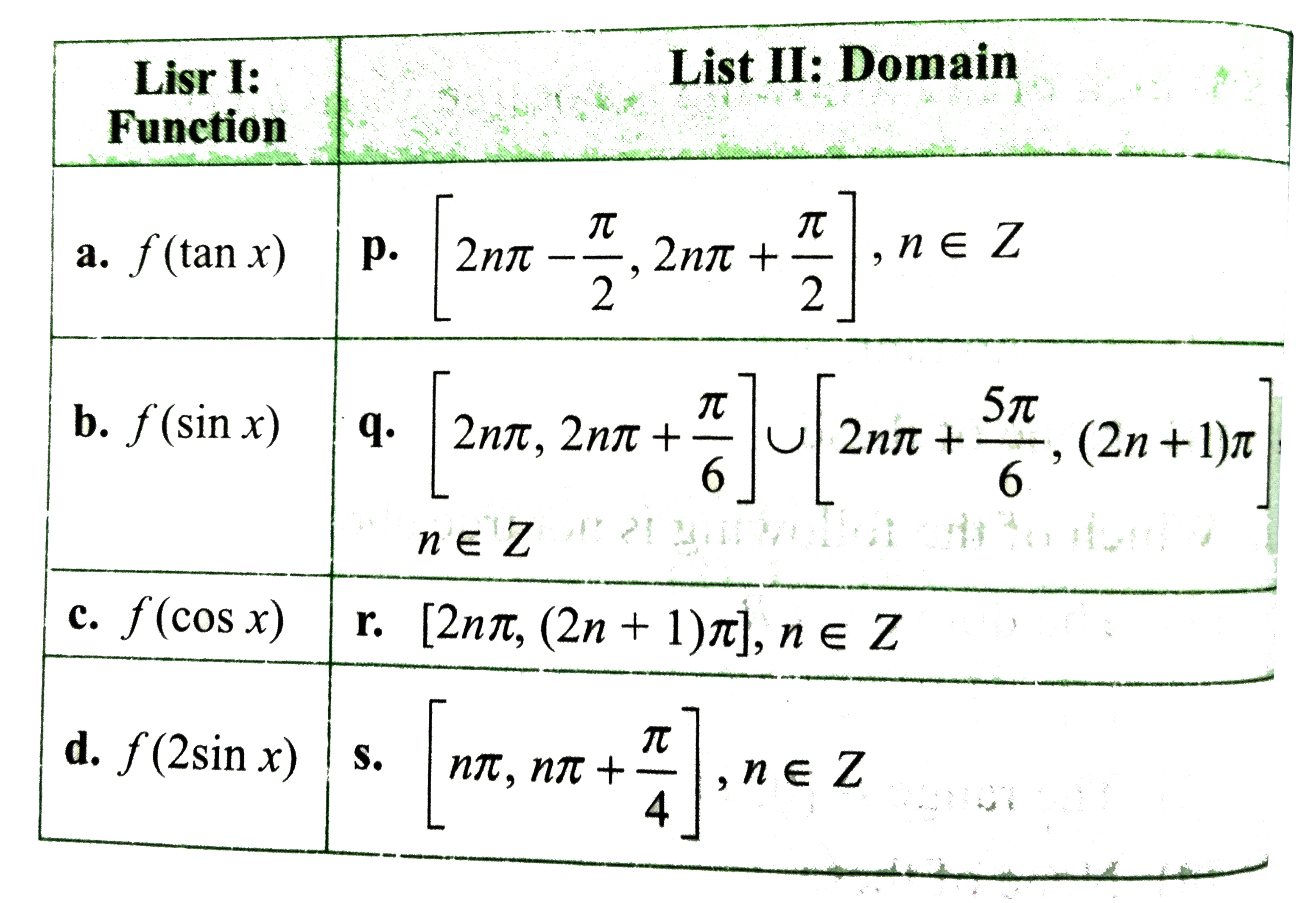If a0=x,an+1=f(an), where n=0,1,2,…, then answer the following questions.
If f:R→R is given by f(x)=3+4xandan=A+Bx, then which of the following is not true?Solution in Tamil
A+B+1=22n+1
|A−B|=1
limh→∞AB=−1
None of these
The correct Answer is:C
Given an+1=f(an)
Now, a1=f(a0)=f(x)
ora2=f(a1)=f(f(a0))=fof(x)
oran=fofofof…f(x)n times
Since a1=g(x)=3+4x, we have
a2=f{g(x)}=g(3+4x)=3+4(3+4x)=(42−1)+42x
a3=g{g2(x)}=g(15+42x)=3+4(15+42x)=63+43x
=(43−1)+43x
Similarly, we get an=(4n−1)+4nx
orA=4n−1andB=4n
orA+B+1=22n+1,|A−B|=1,and
limn→∞4n−14n=limn→∞(1−14n)=1
Topper's Solved these Questions
- BOOK - CENGAGECHAPTER - RELATIONS AND FUNCTIONSEXERCISE - Exercise (Matrix)9videos
RELATIONS AND FUNCTIONS
- BOOK - CENGAGECHAPTER - RELATIONS AND FUNCTIONSEXERCISE - Exercise (Numerical)31videos
RELATIONS AND FUNCTIONS
- BOOK - CENGAGECHAPTER - RELATIONS AND FUNCTIONSEXERCISE - Exercise (Multiple)27videos
RELATIONS AND FUNCTIONS
- BOOK - CENGAGECHAPTER - Quadratic Equations, Inequalities, Modulus and LogarithmsEXERCISE - Question Bank28videos
Quadratic Equations, Inequalities, Modulus and Logarithms
- BOOK - CENGAGECHAPTER - SCALER TRIPLE PRODUCTS EXERCISE - DPP 2.311videos
SCALER TRIPLE PRODUCTS
Similar Questions
The function f(x) is defined on the interval [0, 1]. Now, match the following lists:
 04:20View Solution
04:20View SolutionLet f be a real-valued invertible function such that f(−32xx−2)=5x−2,x≠2. Then value of f−1(13) is________
09:34View SolutionLet f(x)=sec−1[1+cos2x], where [.] denotes the greatest integer function. Then the range of f(x) is
01:36View SolutionLet a,b,c,d be positive integers such that (log)ab=32and(log)cd=54. If (a−c)=9, then find the value of (b−d).
02:57View SolutionNumber of integral value(s) of λ for which vectors x2ˆi−ˆj+xˆk,(λ−1)ˆi−2λˆj+ˆk and ˆi−ˆj+ˆk, in the order from right-handed system ∀x ∈R, is
03:23View SolutionIf a_(0)=x,a_(n+1)=f(a_(n)), where n=0,1,2,..., then answer thefollowing questions.If f(x)=m sqrt(a-x^(m)),x<0,m<=2,m in N ,then
05:16View Solutiona0fn(x)+a1fn−1(x).g(x)+a2fn−2g2(x)+......+angn(x)≥0
01:44View SolutionLet f(x)=a_(0)x^(n)+a_(1)x^(n-1)+a_(2)x^(n-2)+......+a_(n),(a_(0)!=0) if a_(0)+a_(1)+a+_(2)+......+a_(n)=0 then the root of f(x) is
02:56View SolutionIf a0=x,an+1=f(an), where n=0,1,2,…, then answer the following questions.
If f(x)=11−x, then which of the following is not true?03:51View SolutionIf a0=x,an+1=f(an), where n=0,1,2,…, then answer the following questions.
If f:R→R is given by f(x)=3+4xandan=A+Bx, then which of the following is not true?05:26View SolutionIf aa,a2,a3,….,an are in H.P. and f(k)=n∑r=1ar−ak, then a1f(1),a2f(2),....a3f(n) are in :
View SolutionIf a_(0)=x , a_(n+1)=f*(a_(n)) , n=01,2,3,…., find a_(n) when f(x)=sqrt(|x|)
08:26View SolutionIf a_(0)=x , a_(n+1)=f*(a_(n)) , n=01,2,3,…., find a_(n) when f(x)=(1)/(1-x)
04:39View SolutionIf a0=x,an+1=f(an), where n=0,1,2,…, then answer the following questions.
If f(x)=11−x, then which of the following is not true?03:14View SolutionIf a0=x,an+1=f(an), where n=0,1,2,…, then answer the following questions.
If f:R→R is given by f(x)=3+4xandan=A+Bx, then which of the following is not true?04:27View Solution

